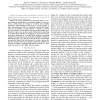Free Online Productivity Tools
i2Speak
i2Symbol
i2OCR
iTex2Img
iWeb2Print
iWeb2Shot
i2Type
iPdf2Split
iPdf2Merge
i2Bopomofo
i2Arabic
i2Style
i2Image
i2PDF
iLatex2Rtf
Sci2ools
KBSE
2008
IEEE
2008
IEEE
Random Test Run Length and Effectiveness
Abstract—A poorly understood but important factor in random testing is the selection of a maximum length for test runs. Given a limited time for testing, it is seldom clear whether executing a small number of long runs or a large number of short runs maximizes utility. It is generally expected that longer runs are more likely to expose failures — which is certainly true with respect to runs shorter than the shortest failing trace. However, longer runs produce longer failing traces, requiring more effort from humans in debugging or more resources for automated minimization. In testing with feedback, increasing ranges for parameters may also cause the probability of failure to decrease in longer runs. We show that the choice of test length dramatically impacts the effectiveness of random testing, and that the patterns observed in simple models and predicted by analysis are useful in understanding effects observed in a large scale case study of a JPL flight software system.
| Added | 31 May 2010 |
| Updated | 31 May 2010 |
| Type | Conference |
| Year | 2008 |
| Where | KBSE |
| Authors | James H. Andrews, Alex Groce, Melissa Weston, Ru-Gang Xu |
Comments (0)

